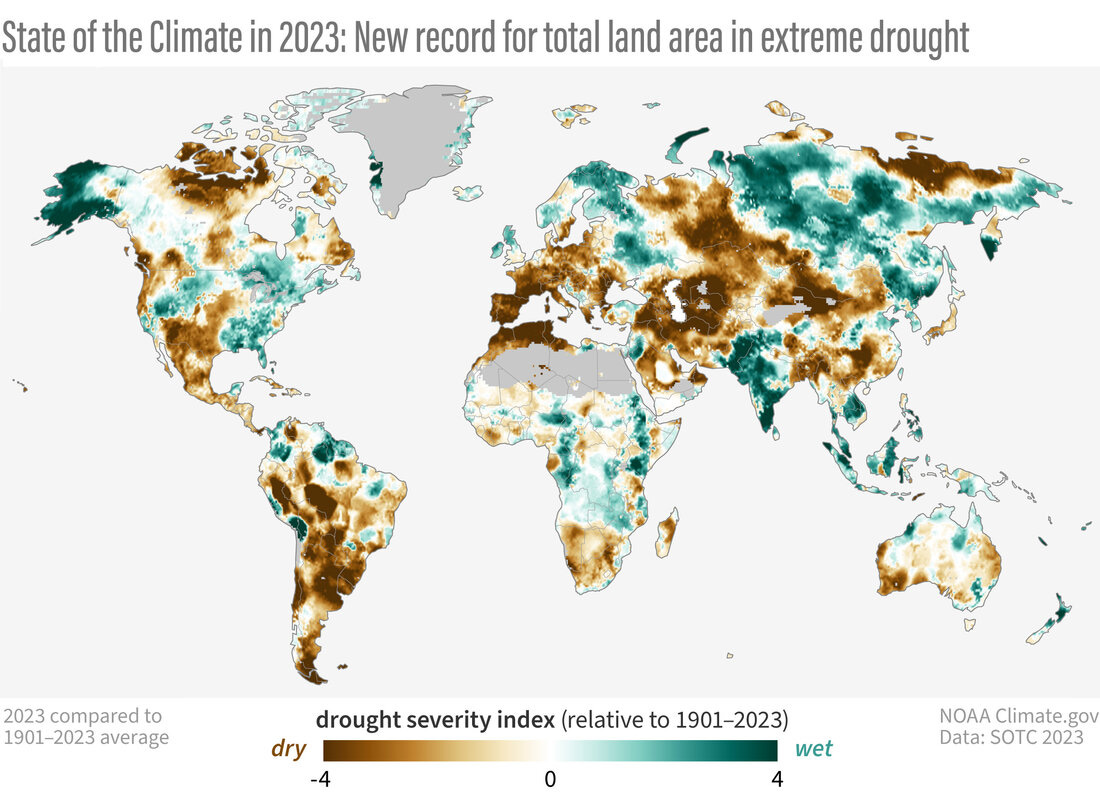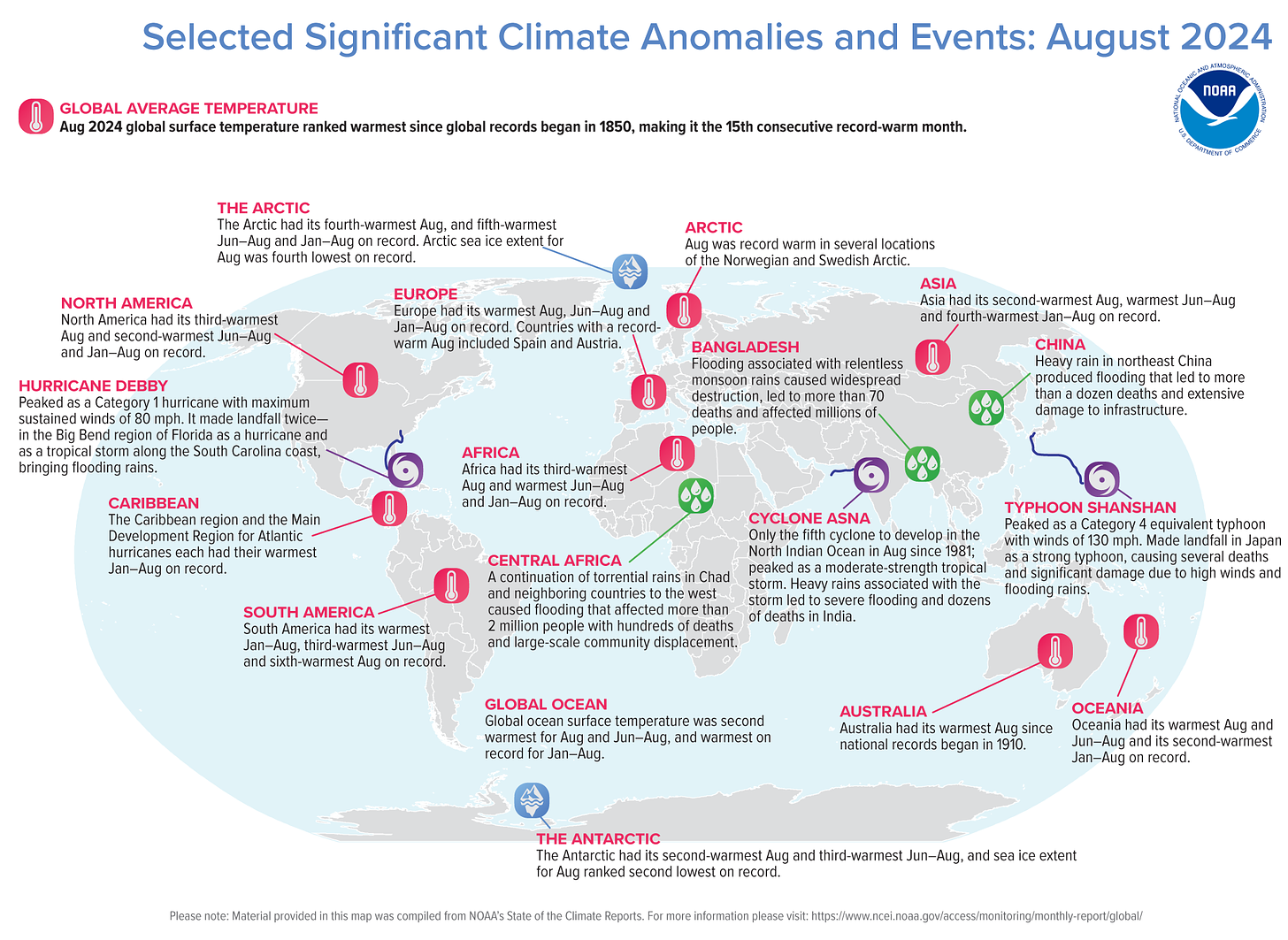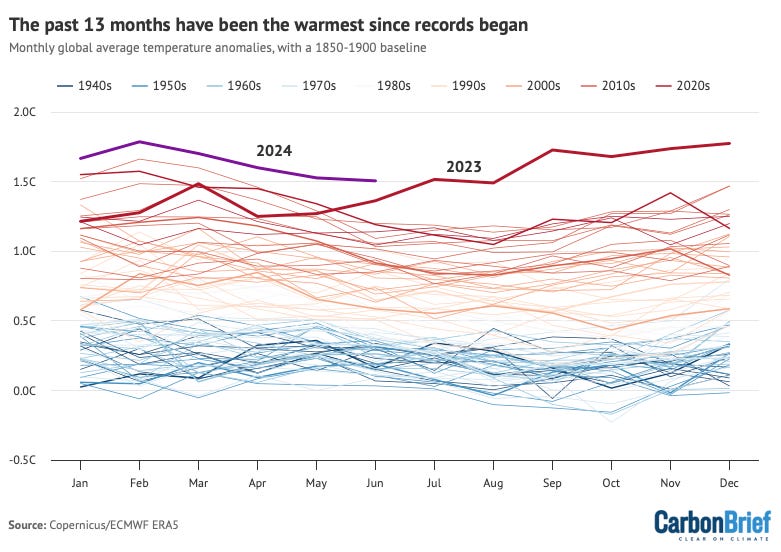

Georgia-Pacific Mill, Toledo, Oregon. Photo: Jeffrey St. Clair.
I had teed up a post for last week presenting recent graphics that illustrate how extreme the climate crisis has become when something got in the way. I sat on it and realized I cannot look at these scientific depictions without feeling a sense of deep grief. I cannot be coldblooded about this. And if they are having this impact on me, I have to know they must have a similar impact on many of my readers. You are conscious caring people. And so I will still make that presentation. But first, a few thoughts on how we absorb all of this.
Though the world has made halting steps toward reducing the fossil fuel pollution that is the primary source of climate disruption, fossil fuel use is still increasing. The growth of clean energy technologies may turn that curve around in the next few years. But it will be nowhere near the at least 7% annual carbon emissions reductions needed to keep temperature increases below the 1.5°C at which the risk of triggering climate tipping points vastly increases. For more on this, watch this excellent 18-minute presentation by Potdam Institute climate scientist Stefan Ramsdorf. It’s a comprehensive survey of the climate situation well worth the time.
My basic honesty compels me to acknowledge it is highly unlikely we will reach that goal. It would require adoption of an economic model that downplays growth in Gross Domestic Product and put a wider range of social and ecological goals at the forefront. The kind of “doughnut economics” of which economist Kate Raworth has written that meets social needs within planetary ecological boundaries. See the below graphic.

But powerful political and economic forces committed to business as usual stand in the way. Many of us struggle with a sense of powerlessness in the face of this all. I certainly do. But we cannot afford to succumb to this, and must continue to fight, as the heroic people of this past Summer of Heat in New York City who targeted financial institutions at the center of the trajectory to fossil fueled hell.
As well as standing up against what we are opposed to, we must work for the future we need. We can take hope and encouragement from the fact that alternatives are being envisioned by thinkers such as Raworth and Jason Hickel, who is also delving into futures beyond conventional growth scenarios. That old saying, another world is possible, is being elaborated by many, and their visions give us a goal for which to shoot.
In my own writing, I have looked at how we can begin to realize better futures where we have most traction, the places we live, under the rubric, building the future in place. We face highly uncertain futures at the global and national level, but whatever happens, we can and must work where we live to create networks of community institutions that build resilience in the face of inevitable turbulence. Institutions such as public banking, social housing, worker coops, circular economies, food security networks, public broadband, that draw us together in a time of polarization.
The world and the places we live will experience increasing climate extremes. There is no way around this. The hope we must have is that at some point this will wake people up and force action at the scale that is required before we have plunged too much deeper into the danger zone. That is why we must continue struggling through our grief and uncertainties, and counter any sense of powerlessness with action, to do all we can to wake up the world and push its political and economic elites to action.
I had to write that preface to present the following. Some of my friends have fallen into doomism, which can easily be promoted by what is illustrated here. I refuse, and will continue struggling for that other, better world which is still possible. In fact, I believe the awakening that is required, and will take place, will make a world that is better in so many respects, socially, economically, politically and ecologically.
The record breaking year of 2023
The largest fact is that 2023 was the hottest summer and year on record, while the 2024 summer has now exceeded 2023, setting up 2024 to be even hotter than 2023.
First, let’s look at last year, from the National Oceanic and Atmospheric Administration’s State of the Climate 2023. Among the key findings (quoting a Climate.gov summary):
+ Earth’s greenhouse gas concentrations were the highest on record.
+ Record temperatures were notable across the globe.
+ Ocean heat and global sea level were the highest on record.
+ Heatwaves and droughts contributed to massive wildfires around the world.
+ The Arctic was warm and navigable.
+ Antarctica sea ice sets record lows throughout 2023.
Climate.gov published the following graphics based on the report, beginning with the climate pollution that is driving global heating





New records in 2024
+ The first six months of 2024 have each set new temperature records, extending an already remarkable streak of 13 consecutive record-breaking months dating back to 2023.
+ On 22 July, the world experienced its highest absolute global daily temperature on record, reaching a scorching 17.15C.
+ The heat has been felt globally, with 63 countries experiencing their warmest June on record. Over the past 12 months, a staggering 138 countries have recorded their hottest temperatures ever.”
Since the report, NOAA reported the hottest July on record, while another global monitoring center, Copernicus, reported the second hottest, “but only by a whisker,” said Samantha Burgess, deputy director of the center. “Globally, July 2024 was almost as warm as July 2023, the hottest month on record. July 2024 saw the two hottest days on record.”
Then August continued the record of hottest months in the NOAA dataset. “August marks the 15th-consecutive month of record-high global temperatures — which is itself a record streak,” NOAA reported. “June–August 2024 was the Northern Hemisphere’s hottest meteorological summer on record, at 2.74 degrees F (1.52 degrees C) above average. The season, which also marks the Southern Hemisphere’s winter, was the Southern Hemisphere’s warmest winter on record at 1.73 degrees F (0.96 of a degree C) above average.”
Copernicus also found summer 2024 the hottest on record.

The following graphics are published with permission from Carbon Brief. Though the first only covers up through June, it illustrates how much recent temperatures have exceeded the record.

The following illustrates how much of the planet experienced record hot temperatures from July 2023 to June 2024 based on records going back to 1850.

The following shows how the planet has heated since 1940, with notable increases since around the middle of the past decade.

I hope we wake up in time. It’s up to those of us who are aware and care to do all we can to make it happen.
This first appeared in The Raven.
The post Climate Extremes and Climate Grief appeared first on CounterPunch.org.
This post was originally published on CounterPunch.org.